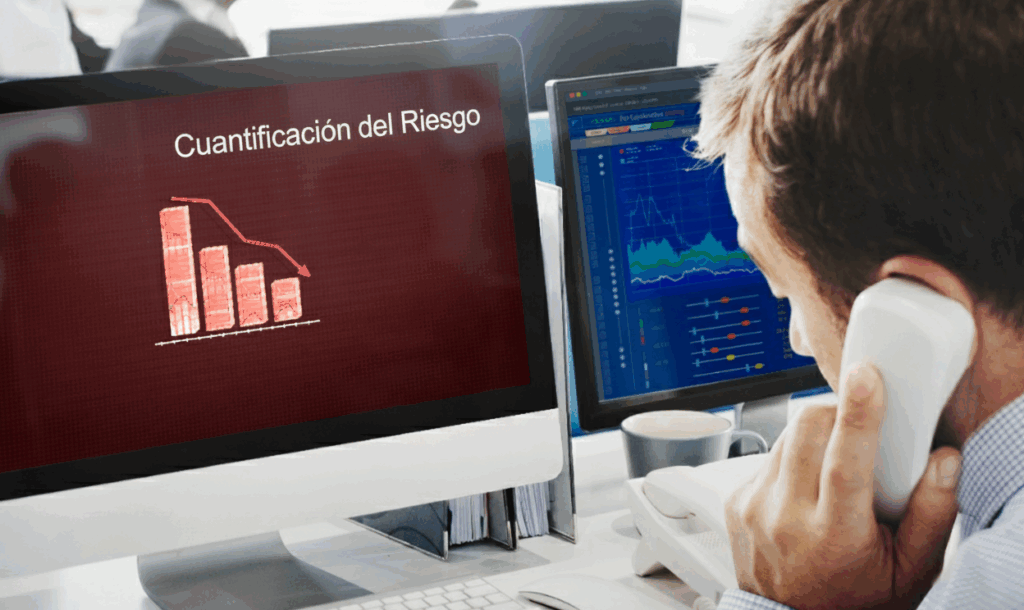Without a doubt, the way others perceive your brand online carries more weight than ever. It's not just about what you post, but what others say about you. Google reviews, social media comments, blog posts, even a simple tweet with bad intentions can trigger a crisis in a matter of hours. And once it starts, stopping it can be as difficult as holding back smoke with your hands.
For this reason, understanding what is online reputation management and how to maintain control over it has become an essential part of any digital strategy. It's no longer just about selling, it's about building trust, credibility and consistent positive presence. And all of that can fall apart in a single day if you're not prepared.
Online reputation is not something you can build once and forget about. It's alive, it changes with every mention you receive, with every customer who gives you an opinion, with every mistake you make... or correct. So keep in mind that your reputation is not entirely in your hands, but you can influence how it develops and how you respond when things get complicated.
How to respond to a crisis in real time
Not all negative opinions represent a real threat. A crisis begins when the perception of your brand starts to deteriorate massively and quickly. Maybe it was a poorly handled comment, an ignored complaint or simply a mistake that went viral. The important thing is that the signs are usually there before the problem erupts.
A online reputation crisis is noticed when there starts to be an unusual volume of negative comments, when media or influencers join the conversation, when your score on review platforms drops sharply, or when your own customers start to show concern or abandonment.
At such times, what you do or don't do will have a direct impact on public confidence. Ignoring what is happening will not make it go away. On the contrary, it will increase the feeling that you don't care. That's why acting in time, with a clear plan, is what makes the difference between a crisis that you manage to contain and one that ends up damaging your brand for a long time.
How to detect a reputation crisis before it gets out of control
Crises don't always come with a bang. Many times they start with a simple comment, a negative review or a seemingly harmless network conversation. The problem is that, if not caught in time, it can become a domino effect that is difficult to stop. This is where an active online reputation management makes the difference.
It is not a matter of guessing, but of knowing how to read the signs. The ideal is not to put out fires, but to know where the fire could emerge. And that is achieved with a good digital monitoring strategy that allows you to see in real time what is being said about your brand on the Internet.
The tools that keep you on your toes
Today, it is no longer feasible to wait for a crisis to arrive before reacting. Fortunately, there are platforms that make it easier to keep the radar on. Tools such as Brand24, SentiOne, Google Alerts, Mention o Talkwalker allow you to automate the tracking of mentions in social networks, digital media, blogs and forums.
But when you need an in-depth, customized analysis based on real 100 % data, Enigmia goes one step further. Its platform analyzes the 100 % It is also able to extract key reputational indicators by comparing them even with your direct competitors. Moreover, it does so in real time, allowing you to detect negative trends before they become a real threat.
It is not just a matter of knowing what is being said, but also of understanding the emotional impact behind every mention. If your metrics start to fill up with words like "disappointment," "fraud" or "poor service," it's time to act. And tools like Enigmia give you not only the data, but also the intelligence you need to make decisions quickly.
With Enigmia you identify the true emotional pulse of your digital reputation.
What signs not to ignore
One of the most common mistakes is to minimize what appears to be a simple isolated comment. But when that comment starts to resonate, it's because it touches a nerve. Some warning signs that you should take seriously:
- Sudden increase in the number of mentions of the same problem
- Repeated negative reviews of the same service or product
- Influencers or accounts with a large number of followers talking about the topic
- Drop in your company's overall rating on public platforms
- Regular customers who begin to express doubts or discomfort
At such times, it is most important to have a clear protocol. Anticipation is the best defense. Detecting an online reputation crisis before it becomes public is the most effective way to reduce its impact.
Beyond the tools, the human factor
Not everything can be detected by an algorithm. Sometimes, a simple email from an annoyed customer, a call to customer service or a comment in a closed group can be the clue you need. That's why it's so important that your team has a culture of active listening, where every interaction with a user can be seen as a signal, not an unimportant complaint.
Listening is not just about monitoring words. It's understanding what's behind them. A customer who feels ignored can be the source of a major crisis. One who feels listened to and addressed in a timely manner can become an advocate for your brand, even in the midst of conflict.
How to respond in real time to an online reputation crisis
When a reputational crisis has already erupted, the margin for error is reduced to zero. There is no time for rehearsal, no room for improvisation. What the brand says -or doesn't say- in the first few hours can make the difference between containing the damage or amplifying it.
Responding in real time is not just a matter of agility. It also implies clarity, coordination and, above all, empathy. Because, even if the situation is complex, what people expect is a human response, not a generic communiqué signed by the communications department.
And that, interestingly, is where many companies fail. They focus on defending themselves when they should be listening, connecting, explaining with transparency.
What to have ready before you go out to speak
Your team must have a clear protocol that automatically activates roles, channels, times and messages. It's not a matter of writing everything down in advance, but of establishing a structure that allows you to act quickly without losing coherence.
Among the elements that should never be missing in this immediate plan are:
- A centralized channel for coordinating all internal information
- A person in charge of leading external communication (does not always have to be the CEO).
- A core message that can be adapted to different channels without changing its essence
- A quick review path to avoid errors in tone or content
The goal is to show a posture that acknowledges the situation, conveys control and shows commitment to the solution.
The value of a well thought-out crisis management plan
Many brands improvise because they never thought that something like this could happen to them. But, the reality is that crises do not warn, they just come. Have a crisis management plans does not mean expecting the worst, but being ready to protect users' trust in you.
This plan should not live in a drawer or be limited to a PowerPoint presentation. It needs to be integrated into actual operations. Include drills, training, key contact lists, drafts for common scenarios, internal escalation paths and clear internal and external communication procedures.
The difference between a one-time mistake and a long-impact crisis is often not what happened, but how it was managed. A well-executed plan shortens reaction times, improves message quality and reduces team stress under pressure.
Starting over after digital chaos
Once the most intense part is over, the rebuilding stage begins. The media attention drops, the negative comments disperse and it seems that everything is back to normal. But this is not the case. On an emotional level, both customers and internal teams are left shaken.
This is where the longest game is played. Rebuild a brand image requires visible actions, not just words. If there were mistakes, let it be seen what is being corrected. If there were victims, let them feel that they are being listened to. If there were doubts, let them be clarified with facts, not with generic phrases.
And no, there is no need to start an emotional campaign or to disguise reality. It is enough to show coherence. Actions communicate more than any press release. That is why, many times, what most strengthens a company's reputation is how it behaved when it was at its worst.
How to prevent future crises with a solid strategy
There is something that differentiates companies that survive crises well, they all see reputation as an asset that is cultivated on a daily basis, not as an insurance policy that is only activated when there are problems.
This proactive vision is based on several pillars:
- Aligned organizational cultureIf brand values are not lived inside the company, they will hardly be projected outside.
- Active listeningMonitor not only mentions, but also direct feedback, trends, and recurring claims.
- Constant and real communicationto be present on networks, not only to sell, but also to converse, respond, accompany.
- Intelligent use of dataReputational KPIs: measure reputational KPIs such as NPS, social sentiment, rating evolution and atypical behavior alerts.
The online reputation crisis management is not limited to the moment of stress. It is built much earlier, in every interaction, in every company policy, in every response to the user that no one sees.
Questions every team should ask itself
A good way to close the cycle is to question yourself. Here are some questions to help review and strengthen the strategy:
- Do we know who speaks for the brand if there is a crisis?
- Have we identified our most likely risk scenarios?
- Do we listen to what is said about us in a structured way?
- Are the teams trained to act quickly if something happens?
- Is there clarity about what values guide our public responses?
Answering them honestly is the first step to avoid future improvisations.
Strengthening your reputation with technology, data and expertise

Today, goodwill is no longer enough. Brands that aspire to maintain a solid reputation must rely on analytics, objective measurements and platforms capable of anticipating trends before they explode.
Enigmia offers an advanced solution for real-time reputational analysis. Through AI technology applied to the information and digital environment, it allows not only to react, but also to foresee what kind of mentions, contexts or patterns are influencing the reputation of an organization.
In contrast to traditional methods, its approach is based on the 100 % of publications -and with the capacity to process millions of data in multiple channels and languages. All this with personalization by sector and direct comparison with competitors.
If your company wants to stop reacting and start anticipating, it is time to work with those who understand that reputation is not an intangible asset, but a tangible competitive advantage.
🔗 CLearn how Enigmia can help you manage your online reputation effectively.
What's next?
Digital reputation is like a conversation that never stops. You can join in and provide clarity, or stay out and let others speak for you. What is clear is that, in this environment, every minute counts and every decision builds or erodes.
Today, more than ever, having a strategy for online reputation management is not optional. It's an essential part of how your brand survives, grows and stays relevant.




